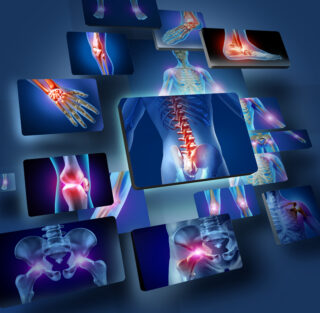
More Pain Management & Rehabilitation Articles
What Causes Pain?

Pain is a significant problem in our society. It’s estimated that up to 80% of adults experience persistent symptoms of pain at some point in their lives. Whether that’s due to a weak muscle, nerve pain, inflammation, or some other cause – it’s not surprising that pain is considered the single leading cause of disability.
Pain is an unpleasant feeling that is conveyed to the brain by sensory neurons. The discomfort signals actual or potential injury to the body. However, pain is more than a sensation, or the physical awareness of pain; it also includes subjective interpretation of the discomfort. Perception gives information on the pain’s location, intensity, and something about its nature. The various conscious and unconscious responses to both sensation and perception, including the emotional response, add further definition to the overall concept of pain.
Pain arises from any number of situations. Injury is a major cause, but pain may also arise from an illness. It may accompany a psychological condition, such as depression, or may even occur in the absence of a recognizable trigger.
Inflammation is the body’s biological response to anything the body considers harmful, including pathogens, irritants, infection, allergens, injury, and pain. There are two types of pain and inflammation.
Acute pain usually goes away as the injury heals or the cause of the pain (stimulus) is removed. Nerve cells, or neurons, perform many functions in the body. Certain types of neurons can transmit a pain signal to the brain. Nerve cell endings, or receptors, are at the front end of pain sensation. This response prompts cells in the injured area to release chemicals that not only trigger an immune response, but also influence the intensity and duration of the pain.
Chronic and abnormal pain refers to pain that persists after an injury heals, cancer pain, is pain related to a persistent or degenerative disease, and long-term pain from an unidentifiable cause. It is estimated that one in three people in the United States will experience chronic pain at some point in their lives; approximately 50 million are either partially or completely disabled. Chronic pain may be caused by the body’s response to acute pain. One of the frustrating aspects of chronic pain is that the stimulus may be unknown.
Both physical and psychological aspects of pain can be dealt with through many ways. Both traditional and alternative methods are available.
Other Articles You May Find of Interest...
- Alleviating Joint Pain in Pets: A Comprehensive Guide
- Sciatica Treatment Options
- How to Promote Bone Fracture Healing? Tips for Faster Healing
- Managing Chronic Back and Neck Pain
- Pervasiveness Of Pain
- Effective Solutions for Lower Back Arthritis: Medial Branch Blocks and Radiofrequency Ablation
- Spinal Compression Fracture Treatment Options

















